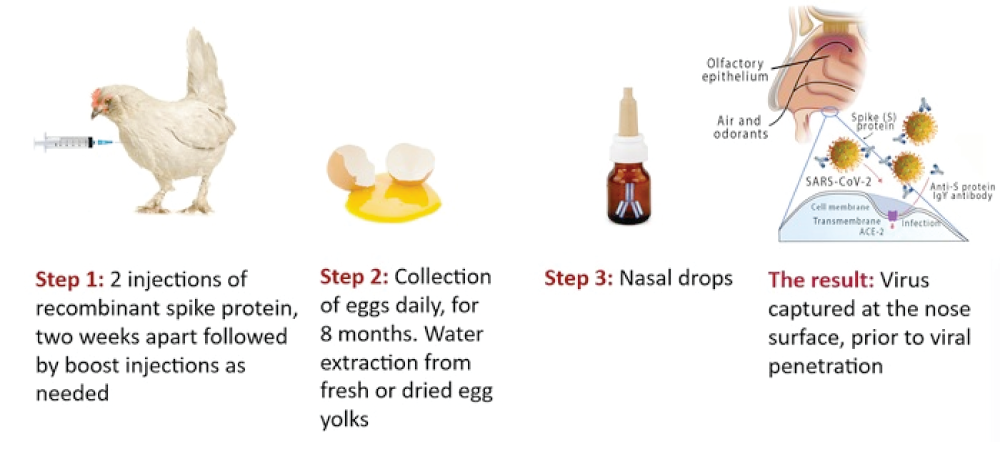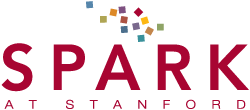To fight COVID-19, the world needs an affordable solution that can be rapidly distributed to everyone
While scientists are scrambling to develop therapeutics and vaccines, realistically it will be well into 2021 or 2022 before safe and effective vaccines are available in sufficient quantities for the world’s population. Moreover, the first approved vaccines may not be very effective or widely adopted.
The solution: inexpensive and safe nasal drops that can protect people from COVID-19.
We at SPARK Stanford and SPARK GLOBAL are developing inexpensive and safe nasal drops that can provide short term, immediate immunity against SARS-CoV-2, the coronavirus that causes COVID-19. We are rapidly bringing this therapy forward but without your immediate help, the therapy’s development will come to a grinding halt.
The primary way that SARS-CoV-2 enters our bodies is through certain receptors, called ACE2 receptors, that line the inside of our noses. Our international research team has developed a way for chicken egg yolks to provide antibodies to block the virus from entering the body through the nose – by packaging the antibodies into nasal drops. When administered, these nasal drops can give people more than 4 hours of protection. Just think how helpful this can be to first responders, essential workers and residents of nursing homes and senior living facilities. The nasal drops can be easily and painlessly self-administered, and can be used at school, work, grocery stores, travel, family gatherings and more.
How the nasal drops are produced and how they can protect you

To produce the antibodies that go into the nasal drops, chickens are first immunized with a key protein of the SARS-CoV-2 virus. The chickens don’t get sick, but instead produce antibodies against the protein. The antibodies, called IgY, are passed to the hen’s eggs, extracted from the egg yolks, and formulated into nasal drops. When administered, antibodies in the drops coat the surfaces inside the nose and throat as a barrier against SARS-CoV-2, by immobilizing the virus on the nose mucus and inhibiting viral binding to the ACE2 receptor at the nasal lining cells.
Rapid mass production anywhere in the world
Each chicken egg contains about 10-100 doses of antibodies for the nasal drops, and each hen lays one egg a day for about 8-10 months. IgY production does not require expensive equipment or sophisticated procedures, therefore high yield and rapid mass production of IgY antibodies could occur locally anywhere in the world at a low cost. This type of preventative therapy has already been shown to be safe for human use, and has been shown to be effective in preventing viral diseases in animals.
Who we are
We are an international group of drug development experts, led by Professor Daria Mochly-Rosen and researchers at the SPARK program at Stanford University. The therapy, suggested by Professor Michael Wallach at The University of Technology, Sydney and co-director of SPARK Australia, is a product of a unique international collaboration coordinated by SPARK GLOBAL, a not-for-profit translational research partnership that originated at Stanford and now has more than 60 affiliated programs at universities around the world. The effort is unusual in that unlike most vaccine development efforts, it is being driven by not-for-profit research institutions and volunteers with no expectation of being able to profit from it.
Progress so far
“While the world waits for a widely available, safe, and effective COVID-19 vaccine, scientists are becoming ever more creative in their search for other ways to protect people from the disease. Now, a clinical trial has begun in Australia to find out whether nasal drops that contain chicken antibodies to SARS-CoV-2 can offer temporary protection.”
While it normally takes 15-20 years to get a therapy from discovery to a patient, we’ve managed to get it into human trials in only six months! How did we do this? Through the hard work, valuable time and generosity of SPARK’s advisers and industry collaborators. The development of this therapy is due to an incredible team effort.
In October 2020, we began our Phase I clinical trial at Linear Clinical Research in Australia, which will evaluate the safety of the nasal drops. The trial is expected to be completed in December, and will allow us to progress to a Phase II trial to evaluate the therapy’s effectiveness. Once proven effective, the nasal drops could be available by next year.
How you can help
SPARK has committed funds into the project, and together with grants and the volunteer work of many advisers, we have spent over $1,200,000 to bring this into Phase I trials. The project has received support from the Booz Allen Foundation Innovation Fund and Stanford ChEM-H.
Yet without your support the therapy’s development will come to a grinding halt. If we reach our goal, it will bring us to a crucial point in getting the nasal drops approved and ready to distribute worldwide.
We need to raise an additional $1 million to conduct testing. If you can help us get to our target, please spread the word!
All contributions will go directly to development of this nasal drop therapy. We are partnering with Stanford University’s giving platform so that all contributions are tax-deductible.

